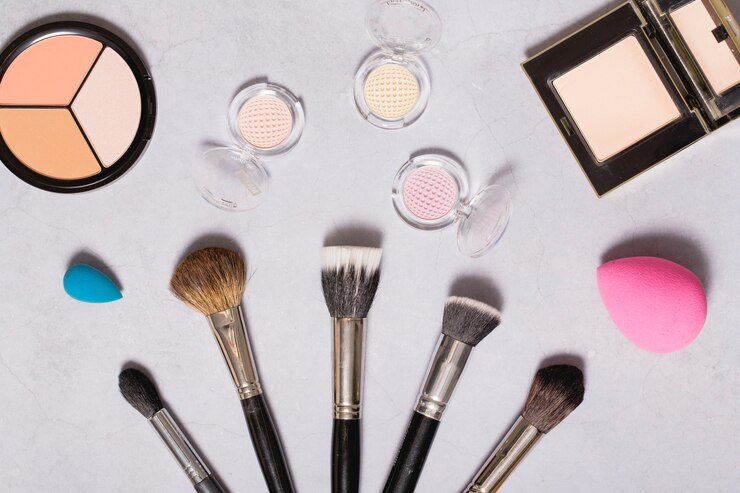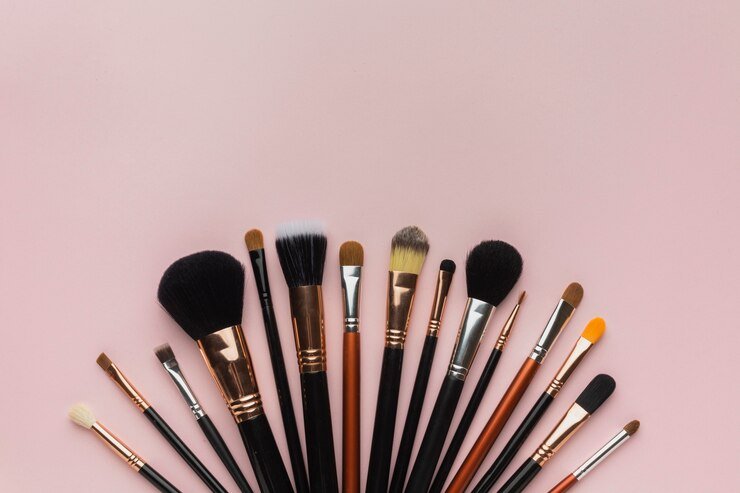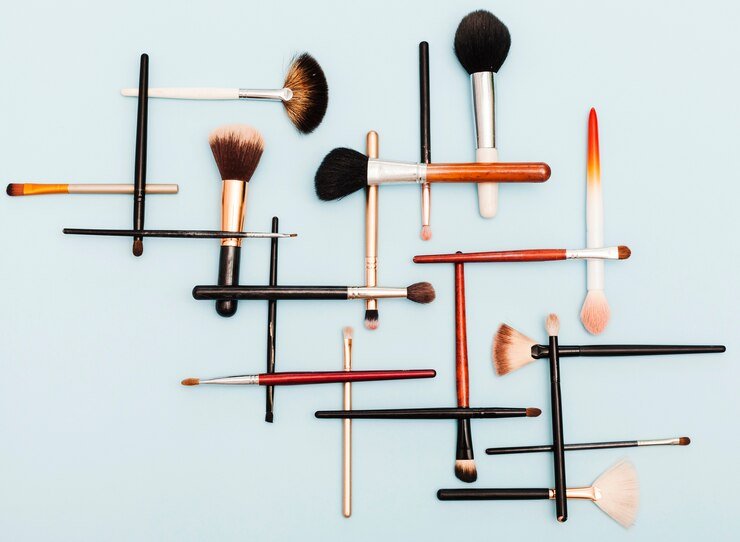How to Clean Your Makeup Brushes: A Comprehensive Guide to Proper Brush Hygiene
Maintaining clean makeup brushes is an essential step in both skin health and makeup performance. Whether you use your brushes daily or occasionally, it is crucial to keep them free of makeup residue, dirt, oil, and bacteria that can build up. Dirty brushes can cause a range of skin problems, including acne breakouts, skin irritations, and even skin infections caused by harmful bacteria.
Cleaning your makeup tools is not just about hygiene; it’s also about making sure that your makeup applies smoothly and evenly every time. In this ultimate guide, we will provide you with everything you need to know about how to clean makeup brushes properly, using the best cleaning tools and methods to maintain both your brushes and skin health.
Why Should You Clean Your Makeup Brushes Regularly?

You might be wondering, “Why do I need to clean my makeup brushes? Aren’t they fine as long as I use them for a single application?”
The answer is no.
Makeup brushes are not just tools for applying makeup; they can be a breeding ground for bacteria, which can lead to skin infections, clogged pores, and breakouts. When you don’t clean your brushes, you’re not just transferring makeup residue from your face to the brush but also potentially harmful bacteria and dirt.
cleaning your brushes is essential, because the makeup production process involves kinds of chemicals which can harm your skin. Here are the key reasons why cleaning your brushes is important:
- Preventing Skin Issues: Dirty brushes carry makeup residue, oil, and dirt, which can irritate the skin and lead to conditions like acne or rashes. Bacteria from your brushes can cause skin infections, including conditions like E. coli, fungal infections, or staph infections.
- Improved Makeup Application: Clean brushes perform better. The buildup of makeup residue on your brushes can cause them to apply products unevenly, leaving streaks or an uneven finish.
- Longevity of Brushes: Regularly cleaning your brushes will help maintain their shape and texture, extending their lifespan. This prevents the brush bristles from becoming stiff or losing their original shape due to product build-up.
- Sanitization and Hygiene: Just like you clean other personal items, your makeup tools should also be sanitized. Bacteria thrive on dirty brushes, and they can lead to health concerns over time. Regular cleaning keeps your brushes free from harmful germs and helps prevent the spread of bacteria.
How Often Should You Clean Your Makeup Brushes?

One of the most important questions about makeup brush hygiene is how often should you clean your makeup brushes? The frequency of cleaning largely depends on the type of brush and how often it is used.
- Foundation Brushes: These brushes come into contact with heavy liquid makeup products like foundation and concealer. It is essential to clean them after every use to remove makeup residue and prevent bacterial growth. Oil-based foundations can easily leave oils behind, which can build up and attract bacteria. If these brushes are not cleaned properly, they can lead to clogged pores and acne breakouts.
- Eyeshadow Brushes: Since eyeshadow is applied in layers, there is often a lot of build-up on these brushes, making them an easy target for bacteria. Clean them at least once a week to avoid skin irritation or eye infections.
- Powder Brushes: While powder products are less likely to transfer bacteria, cleaning these brushes every 10-14 days is recommended for better application and hygiene.
- Brushes for Liquid Makeup: Brushes used for liquid makeup like concealers or foundations should be cleaned after every use. These products tend to stay on the brush and create a breeding ground for bacteria and other harmful germs.
Related: How to Creatively Store Your Makeup Brushes
Step-by-Step Guide on How to Clean Makeup Brushes
Now that we understand why it’s important to clean your makeup brushes, let’s walk through the exact process of cleaning them, making sure that every step is explained in detail for optimal brush hygiene.
Step 1: Wet the Bristles
The first step in the brush cleaning process is to rinse the brush tips under lukewarm water. Lukewarm water is ideal for rinse and repeat because it gently removes the makeup residue and oil without damaging the brush bristles. Be cautious not to submerge the entire brush head, as doing so can weaken the glue that holds the brush head to the handle.
Related Guides:
- How To Use Rosemary Oil For Hair Growth
- 10 Powerful Coconut Oil Combinations for Rapid Hair Growth
- How to Use Castor Oil for Hair Growth
Step 2: Apply Cleanser to the Brush
Next, you’ll want to apply your chosen cleanser to the brush. You can use various types of products for this:
- Gentle Shampoo: Using gentle shampoo like Johnson’s Baby Shampoo is an excellent choice for cleaning natural fiber brushes. It’s soft on the bristles while still effectively removing makeup residue and dirt.
- Brush Cleaners: If you prefer a more specialized product, use a brush cleanser like Beautyblender Solid Blendercleanser or Cinema Secrets Brush Cleaner. These cleaners are designed to remove oil-based makeup, dirt, and bacteria without damaging the brush.
- Dish Soap: For deep cleaning, especially for brushes used with liquid makeup products, dish soap is a good option. It cuts through oils effectively and sanitizes the bristles.
Step 3: Swirl the Brush in the Palm of Your Hand
Once you’ve applied the cleanser to the brush, swirl the brush in circular motions in your palm. This helps create a lather that loosens and lifts the makeup residue and oil from the brush. It also works to remove any bacteria that may be present on the bristles. Make sure to clean the brush tips properly but avoid scrubbing too hard, as this can cause the bristles to lose their softness.
Step 4: Rinse Thoroughly
After the brush has lathered and cleaned, rinse it under lukewarm water. Hold the brush with the bristles facing down to prevent water from getting into the ferrule (the metal part holding the bristles). Continue rinsing until the water runs clear. This step is critical because any leftover cleanser or makeup residue can cause product buildup, which will affect future makeup applications.
Step 5: Squeeze Excess Water
Once the brush has been thoroughly rinsed, gently squeeze excess water from the bristles using a clean paper towel or a Viva® Multi-Surface™ Paper Towel. Do not wring or twist the brush, as this can damage the brush head and lead to brush stiffness.
Step 6: Drying the Brushes
Properly drying your makeup brushes is essential to preserving their shape and ensuring that they remain free from bacteria. The two best drying methods are:
- Flat Drying: Lay the brushes flat on a clean, dry towel, making sure the brush tips are hanging off the edge of the counter or towel. This allows the water to naturally drip out without causing the bristles to loosen.
- Air Drying: Allow the brushes to dry in a well-ventilated area. Do not dry brushes with a blow dryer or place them near a radiator, as the heat can damage the bristles and shorten their lifespan.
Best Products to Clean Makeup Brushes
When it comes to cleaning makeup brushes, there are many products available on the market. The following are some of the top-rated products:
- Beautyblender Solid Blendercleanser: Known for its effectiveness at removing makeup residue and oil from synthetic brushes and sponges, this cleanser is a fan favorite among beauty enthusiasts.
- The Masters’ Brush Cleaner and Preserver: Ideal for both natural hair brushes and synthetic brushes, this product is designed to preserve the shape and softness of your brushes while removing makeup residue and bacteria.
- Savon De Marseille Olive Oil Soap: This traditional bar soap is excellent for cleaning natural hair brushes. Its gentle formula cleans effectively without damaging the brush bristles.
- Cinema Secrets Brush Cleaner: A quick-drying, disinfectant solution that works well for professional makeup artists and beauty lovers who need an efficient way to clean their brushes in between clients or during a busy day.
Natural Ways to Clean Makeup Brushes

If you’re looking for an eco-friendly and natural way to clean your brushes, several natural products can serve as alternatives to commercial cleaners. Here are some great options:
- Apple Cider Vinegar: This product is a natural disinfectant that helps eliminate bacteria from your brushes. Mix it with water to clean and disinfect your brushes.
- Tea Tree Oil: Known for its antiseptic properties, tea tree oil is great for cleaning brushes used for liquid makeup or powder products. It helps prevent bacterial growth while also keeping your brushes smelling fresh.
- Lemon Juice: Freshly squeezed lemon juice can act as an effective bacteria-fighting agent and helps break down oil-based makeup products.
Tips for Cleaning Synthetic vs. Natural Hair Brushes

Synthetic brushes are easier to clean and more durable than natural fiber brushes, which require special care. Here are the cleaning tips for each type:
- Synthetic Brushes: Use dish soap, clarifying shampoo, or brush cleaners to clean these brushes. Since synthetic brushes are made of man-made materials, they can handle more intense cleaning without damage.
- Natural Hair Brushes: Use gentle shampoos or specialized brush cleaners. Avoid soaking natural hair brushes in water, as they can become brittle. Conditioning these brushes once a month helps preserve their softness and ensures the bristles stay healthy.
Conclusion: Why Makeup Brush Hygiene Is Critical
The health of your skin and the effectiveness of your makeup depend on the condition of your makeup brushes. Cleaning makeup brushes is an essential step in maintaining both brush hygiene and skin health. It ensures that bacteria are kept at bay, preventing skin irritations, acne breakouts, and even infections. Whether you’re a professional makeup artist or just someone who loves doing own bridal makeup especially, regular brush cleaning is crucial for smooth, flawless application.

